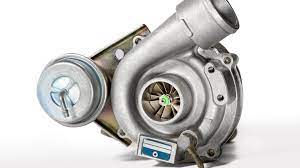Turbocharger replacement can be an expensive affair, especially if you make mistakes along the way. But with the right precautions and knowledge, you can save yourself time, money, and future headaches.
In this post, we’ll be sharing some expert tips to help you avoid costly mistakes when replacing your turbocharger. Whether you’re a seasoned mechanic or a DIYer, these tips will surely come in handy.
Understand Your Turbocharger’s Specifications
Before you begin the replacement process, be sure to understand your turbocharger’s type, size, and specifications. The wrong size or type of turbocharger can cause serious damage to your engine, costing you even more money in the long run. You can find this information in your car’s manual or by consulting with your car manufacturer’s technical support team. Knowledge is key, so don’t hesitate to ask as many questions as possible.
Use High-Quality Replacement Parts
Getting genuine and high-quality replacement parts is critical to a successful turbocharger replacement. Most car parts stores will offer a wide range of replacement parts, but not all are of the same quality. In this case, it is better to go for well-known brands or OEM parts. If you’re not sure what parts are best or where to get them, ask your mechanic or car manufacturer.
Properly Clean and Lubricate The Turbocharger
Cleaning and lubricating your turbocharger properly and regularly can help ensure excellent performance and prolong its lifespan. During the replacement process, take the time to clean the turbocharger’s internal and external parts, as well as any piping and hoses connected to it. Once cleaned, lubricate each piece with quality oil to prevent friction and reduce wear and tear. Again, your car’s manual or car manufacturer’s technical support team can give you information on how to clean and lubricate your turbocharger.
Check All Other Components and Systems
Another common and costly mistake when replacing a turbocharger is not checking other car components and systems. Issues with the airflow, fuel supply, and ignition can lead to premature turbocharger failure, and if not appropriately addressed, the same mistakes will occur again. As such, before installing the new turbocharger, ensure that all other systems and components are in good working order.
Properly “Break-In” the Turbocharger
Finally, after installing your new turbocharger, don’t jump straight into heavy driving or racing. It’s essential to follow a proper “break-in” period of around 500 to 1,000 miles before undertaking any high-performance driving. Driving too aggressively too soon can lead to damage to the new turbocharger, costing you even more money.
Conclusion
Turbocharger replacement can be a costly and complicated process, but with the right knowledge, precautions, and quality replacement parts, you can avoid any issues. By understanding your car’s specifications, using high-quality parts, cleaning and lubricating your turbocharger properly, checking other components and systems, and properly breaking it in, you can ensure smooth and reliable performance from your turbocharger for years to come. Remember, if you’re not sure about any aspect of the replacement process, don’t hesitate to ask your mechanic or car manufacturer’s technical support team for assistance.
